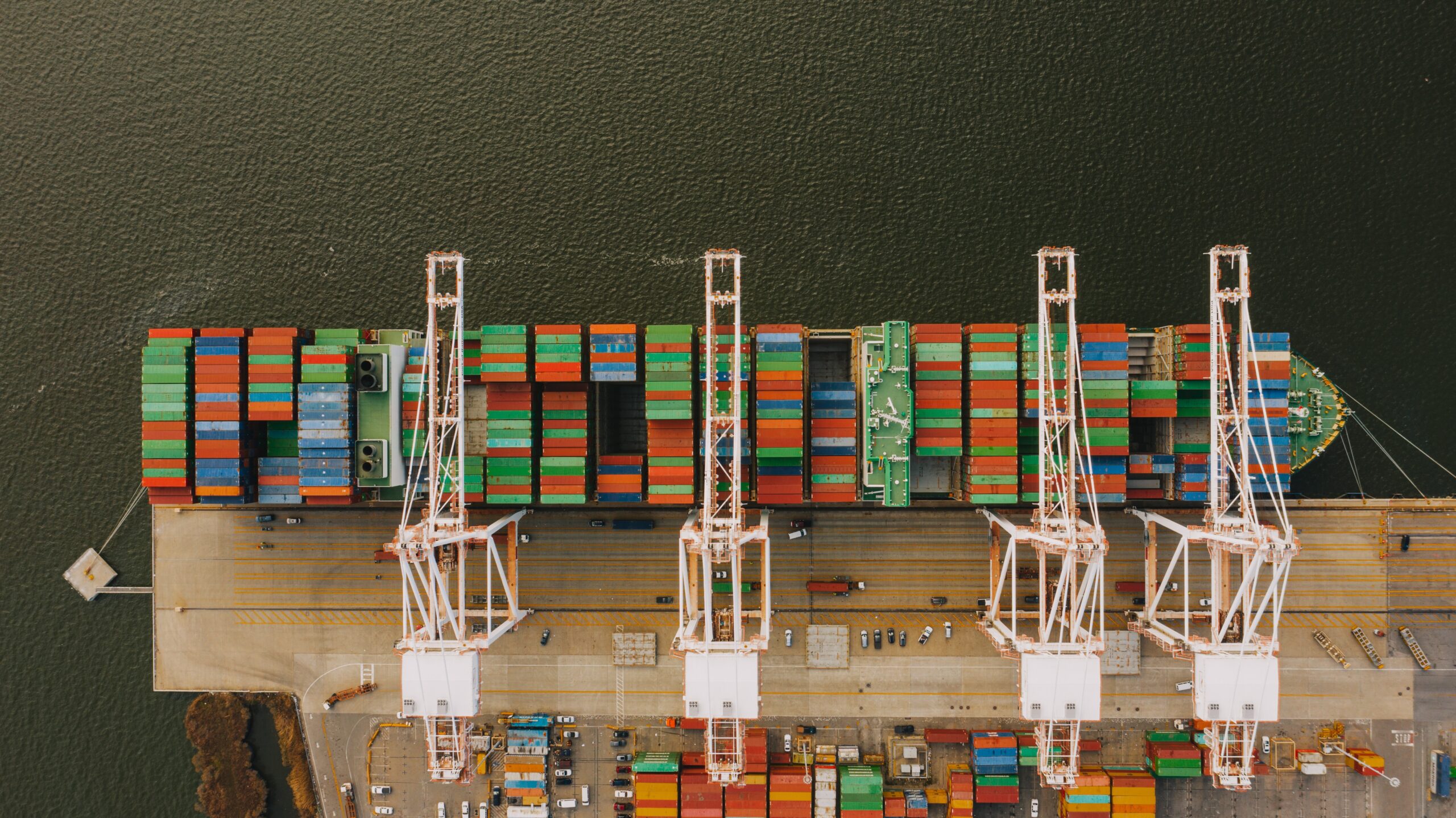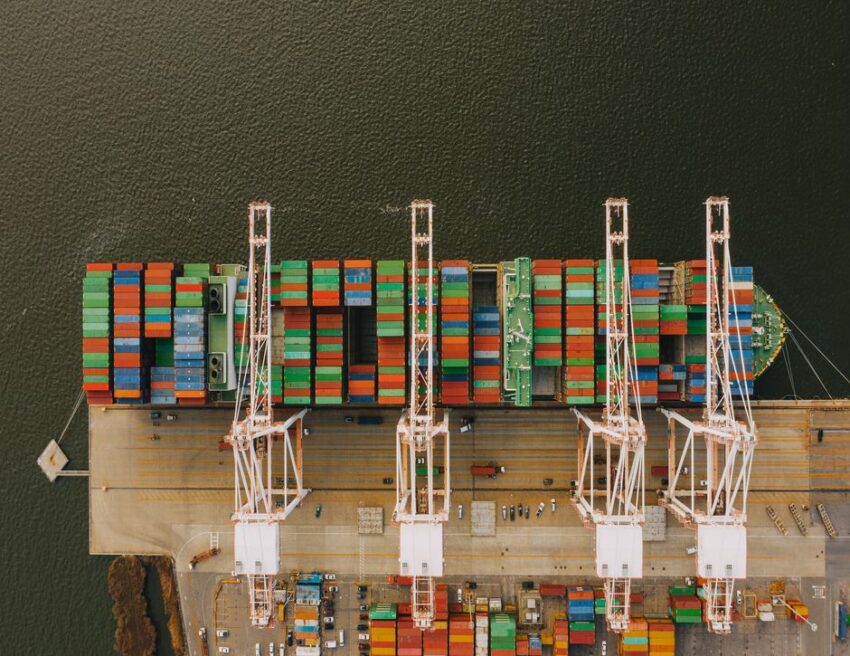The sea freight shipping industry counts on more than 800 active ports on the planet. Manufacturers, retailers, buyers, and suppliers across all sectors depend on ocean freight shipping services for importing and exporting shipments. As per World Shipping Council, over 6000 container ships ply the seas everyday moving around 226 million containers per year. The sea ports where the containers are stored act as the gateways to imported shipments and portals for departing cargo. Simply put, the sea ports play the most important role in the container shipping industry by facilitating seamless commercial activities.
Today’s blog is somewhat different from our previous blogs. In this blog, we have created a listicle of the 10 busiest ports on the globe. Read on to get acquainted with the busiest international ports and their impact on the ocean freight shipping industry.

List of the 10 busiest international ports in 2021
-
Shanghai Port
The Port of Shanghai is not just the largest port in China but also the busiest dock on the planet. Located along the Yangtze River Delta, it sprawls over an area of 2,200 square miles. This busy harbour handled around 43.6 million (TEU) containers and 542.46 million tonnes of cargo in 2019 before the pandemic hit. Back in 2010 it surpassed the Port of Singapore to secure the position of the busiest sea port of the world. This port has three major container terminals that have more than 13 Km quay length, 156 quay cranes and 43 berths.
-
Port of Singapore
Located in the southern Malay Peninsula, the Singapore Port is one of the busiest transhipment hub on the planet. Moreover, it is presently the biggest publicly owned port. This port is connected to over 600 ports across 123 nations. Back in 2019, it handled 37.2 million TEUs of containers. The port authorities are presently constructing a new automated container terminal called Tuas Port. Once completed this container terminal will be able to handle 65 million TEUs. By 2040 the Tuas Port will become the largest fully automated terminal in the world.
-
Port of Ningbo-Zhoushan
The Port of Ningbo that hit the news a few months back is one of the largest freight hubs in China. This port handles around 460 million tonnes of shipments every year. The Ningbo Port with over 309 berths is connected to more than 560 ports across 90 countries. Moreover, this port lies on the busiest coastal shipping route in China. The Port of Ningbo is famous for handling manufactured items and raw materials from the Americas and Australia.
-
Port of Shenzhen
The Port of Shenzhen is the collective name given to a number of ports located on the coastline of Shenzhen. Located on the Guangdong Province of China this port lies on the south of the Pearl River Delta. The Port of Shenzhen is one of the most important Chinese harbours for the handling of international cargo. This port is home to more than 40 shipping companies. It is connected with more than 300 ports across 100 countries.
-
Port of Guangzhou
The fifth largest container port in the world is located in Guangzhou province of China. Since as early as 200 BC this port was operational acting as a major link in the Silk Road on the Sea. The Port of Guangzhou has over 4,600 berths, 133 buoys and 2,359 anchorages. It is capable of accommodating the largest container ships. It is well connected with over 300 ports across 80 cities. Additionally, the Port of Guangzhou has a cargo handling capacity of 460 million tonnes.
-
Port of Busan
The Port of Busan in South Korea that lies at the mouth of Naktong river in South Korea is presently the 6th busiest container port. The Busan Port Authority that operates and manages this port is all set to transform it into a world-class port. More than 130 container ships visit this port on a regular basis. The Busan port handles around 91 million tonnes of cargo every year and is responsible for processing around 40% of the net maritime cargo of South Korea. Since 2016 the South Korean government has been investing towards making this port the 2nd largest transshipment hub in the world.
-
Port of Qingdao
One of the most important trade and transportation hubs in the West Pacific, the Port of Qingdao is situated on the Yellow Sea close to Qingdao, Shandong Province, China. Apart from four port areas it also includes a huge container terminal specifically for iron ore shipments. This port trades with over 450 ports in 130 countries. This port can handle a net capacity of 400 million tonnes per year. Moreover, it is also the largest Chinese port for crude oil shipments. The Port of Qingdao is also known for its massive capacity for dry bulk vessels. The world’s first suspended monorail with the capacity to carry fully loaded 20′ and 40′ containers has been under construction since last year at the Port of Qingdao.
-
Port of Hong Kong
The Hong Kong Port lies on the Kowloon Peninsula by the South China Sea. One of the largest hubs of the sea freight shipping industry in the Southeast and East Asian regions, this port is connected to 500 destinations via 400 container ships. The entire port area sprawls over an area of 279 hectares and comes with 24 berths. Additionally, the deep waters of this port make it perfect for accommodating all kinds of shipping vessels.
-
Port of Tianjin
The largest shipping hub of Northern China and the 9th busiest sea port of the world, the Port of Tianjin is located around 160 Km from Beijing. This port which lies on an area of 131 square kilometres is connected to almost 500 ports across 190 countries worldwide. Back in 2019 before the pandemic disrupted the commercial activities, this port handled over 15.97 million TEUs. All of the top 20 container liners of the world have been to this port. Ships from the Port of Tianjin go to more than 600 ports across 180 countries.
-
Port of Rotterdam
The only port outside Asia in our list of 10 busiest international sea ports, the Port of Rotterdam is one of the oldest and largest ports of Europe. Even in the year of the pandemic, this port handled port of Rotterdam handled 436.8 million tonnes of cargo. Its connectivity to the Paris, London and Germany’s Ruhr district makes it one of the most important distribution hubs of the continent. Between 1962 to 2004 it used to be the largest port in the world. Covering an area of 42 km this port can be directly accessed from the North Sea. Moreover, this is one of the few ports that is committed to delivering carbon neutral operations.


